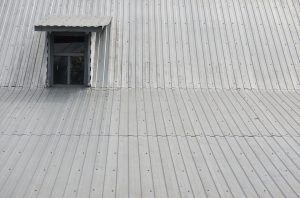Some of the new homeowners see their dream property turn into a nightmare because they didn’t notice plumbing problems before they made their purchase. To help you avoid that, here are the common but hidden plumbing problems you need to be aware of.
Roof
Condition of the roof and guttering: The inspector must actually go up and check it out. Raise a red flag if there’s rust… roofs can even have seedlings growing out of them.
Newly renovated or newly painted roof: Check if it’s a spruce up or a cover up.
Concealed access points: You should be suspicious if a building inspector notes the access points are hard to find or concealed. It may be that the access points were covered because there’s something to hide in the roof or subfloor area.
Inside the House
Most hidden plumbing problems are related to water seeping and can add significantly to a property’s maintenance budget.
Poor tiling job: If the place has been tiled or re-tiled in a sloppy manner, imagine what the waterproofing underneath is like. Slapdash waterproofing can be a huge drain on funds because you’ll be paying for leak detection, then band-aid type repairs and eventually a full bathroom renovation.
Bathroom/kitchen renovations: Who conducted the renovation: a reputable building company, a no-name builder or an owner builder? If it’s either of the two latter cases, you should be wary of the quality of the renovation and inspect it with a fine-toothed comb.
Current drainage diagram: Most purchase contracts have the sewer service diagram attached. You should get a copy of it. No diagram? Purchase one as the information is worth many times the fee. Diagrams are updated if any changes to drainage (moving a sink, basin, WC or a sewer repair) have occurred. Be wary if the diagram has never been updated and this is an older home. If the diagram pre-dates a bathroom renovation, either new fixtures have been attached to the old plumbing (corner cutting) or the diagram was never updated (this raises concerns about the plumbers that did the work).
Outside the House
Age of the hot water unit: You’ll find this information on its badge. They have a life of 8 to 10 years if poorly maintained (most people don’t have their heaters serviced as they should), or 15 to 20 years if they’ve been regularly serviced. If the unit is more than 8 years old, factor in the cost of a replacement in the near future.
Galvanised pipes: If the water or gas pipes are exposed, you’ll find them along the outside walls. If they’re copper, run your hand along the surface — thick, pitted or rough ones could be galvanised and will need to be replaced, so factor in that cost.
Sewer pipes: Check if there’s an evidence of clay pipes at the base of the downpipe or garden taps. A clay sewer system will break (a matter of when, not if) so consider the cost of replacing your drainage system. If it’s a terrace house, check to see if there’s a shared common sewer (it can be tricky to negotiate sharing a repair with neighbours).
Cuts in concrete: If there’s a piece of footpath or concrete with a square cut out of it on the property, it only means that at some point, someone has investigated drainage issues. If there has been a problem in the past, make sure it has been fixed, not just investigated and forgotten.
Finding any one of these commonly overlooked plumbing problems can save you from paying top dollar for the property and then shelling out thousands more for repairs and help you be smart about your buying offer and factoring in the cost of repair in your negotiations.
Make sure your building inspector notes these plumbing problems. If you’re unsure if they can do this job, a professional plumber can do it for you.




